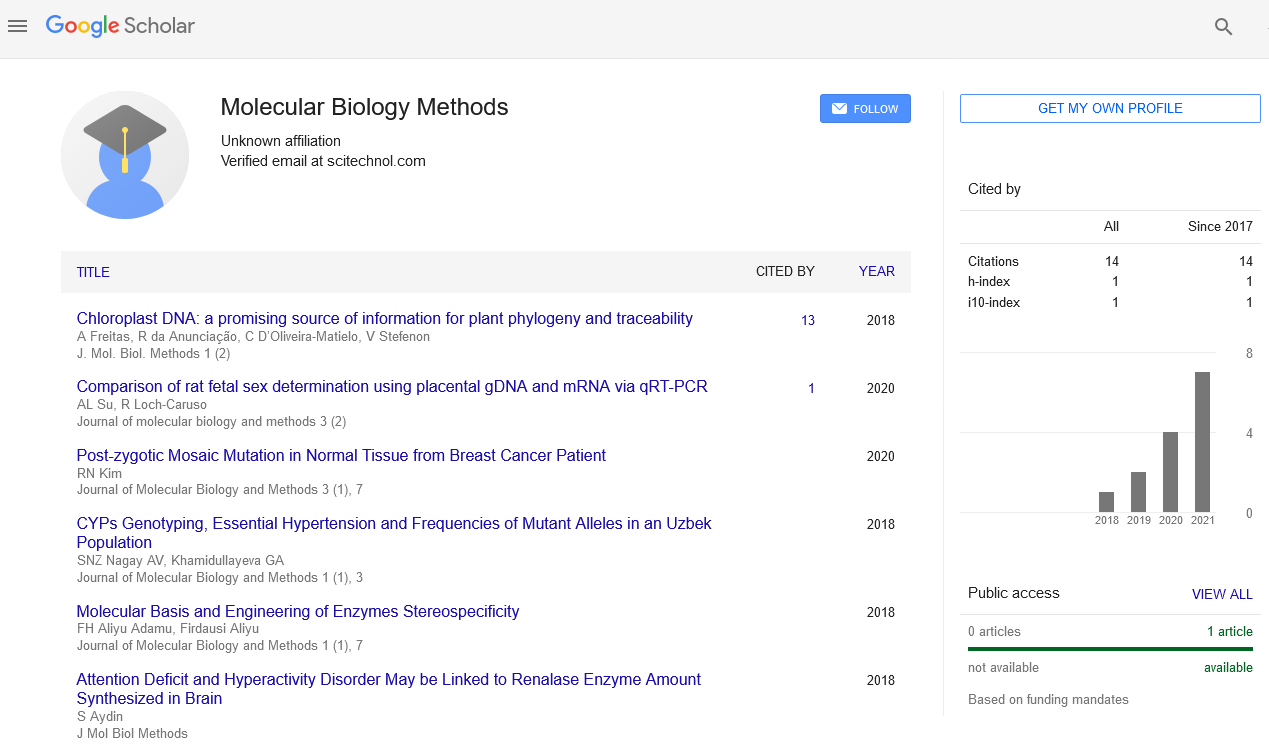Perspective, J Mol Biol Methods Vol: 6 Issue: 2
Exploring Novel Molecular Targets for Cancer Therapy through Single-Cell Analysis
Anthony Gozde*
1Department of Otolaryngology, Emory University School of Medicine, Atlanta, USA
*Corresponding Author: Anthony Gozde,
Department of Otolaryngology, Emory
University School of Medicine, Atlanta, USA
E-mail: gozdeanthony@yahoo.com
Received date: 26 May, 2023, Manuscript No. JMBM-23-108094;
Editor assigned date: 30 May, 2023, Pre QC No. JMBM-23-108094 (PQ);
Reviewed date: 14 June, 2023, QC No. JMBM-23-108094;
Revised date: 22 June, 2023, Manuscript No. JMBM-23-108094 (R);
Published date: 29 June, 2023, DOI: 10.4172/jmbm.1000133
Citation: Gozde A (2023) Exploring Novel Molecular Targets for Cancer Therapy through Single-Cell Analysis. J Mol Biol Methods 6:2.
Description
Cancer remains one of the most formidable challenges in modern medicine, affecting millions of people worldwide and posing a significant burden on healthcare systems. Conventional cancer therapies, such as chemotherapy and radiation, have made significant strides in treating various cancer types. However, their effectiveness is often limited by the heterogeneous nature of tumors and the development of resistance mechanisms. In recent years, single-cell analysis has emerged as a powerful tool in the field of cancer research. Unlike traditional bulk analysis, which averages the molecular characteristics of a large population of cells, single-cell analysis allows researchers to study individual cells with unprecedented resolution. This technology has provided invaluable insights into the complexity and diversity of cancer cells within a tumor, enabling the identification of novel molecular targets for more effective and personalized cancer therapies.
One of the primary advantages of single-cell analysis in cancer research is the ability to decipher tumor heterogeneity. Tumors are comprised of a diverse population of cells, each with distinct genetic and epigenetic profiles. This intratumoral heterogeneity contributes to treatment resistance, tumor relapse, and metastasis. Single-cell analysis allows researchers to characterize and profile individual cancer cells, revealing subpopulations with unique molecular signatures. By understanding the specific molecular features of different cell subpopulations, researchers can identify vulnerabilities and potential targets for therapeutic intervention. Through single-cell analysis, researchers have identified previously unrecognized subtypes of cancer cells and potential drivers of tumor growth. For example, studies have revealed rare cancer stem cells that possess self-renewal capabilities and are implicated in tumor initiation and recurrence. These cancer stem cells often display distinct molecular markers and signaling pathways, making them attractive targets for developing therapies aimed at eradicating the root cause of the tumor.
Furthermore, single-cell analysis has shed light on the dynamic nature of tumor cells and their responses to treatment. Traditional bulk analysis can mask the subtle changes that occur in different cell populations within a tumor. However, single-cell analysis has demonstrated that some cells may respond to treatment, while others exhibit resistance. Unraveling the mechanisms of treatment resistance at the single-cell level is difficult for devising combination therapies that can effectively target both sensitive and resistant cell populations, improving treatment outcomes. Another area where single-cell analysis has shown promise is in the discovery of new biomarkers for early cancer detection and patient stratification. By identifying specific molecular markers associated with different cancer subtypes or treatment responses, clinicians can tailor therapies to individual patients, increasing the chances of successful outcomes while reducing unnecessary side effects. The application of single-cell analysis has also extended to the study of The Tumor Microenvironment (TME). The TME consists of various non-cancerous cells, including immune cells, fibroblasts, and blood vessels, which interact with tumor cells and influence their behavior. Understanding the crosstalk between cancer cells and the TME is important for designing immunotherapies and combination treatments that harness the body's immune system to target cancer cells selectively. Despite its tremendous potential, singlecell analysis in cancer research still faces some challenges. The technology requires specialized equipment and expertise, making it relatively expensive and not easily accessible to all researchers. Additionally, analyzing large datasets generated from single-cell experiments can be computationally intensive and time-consuming.
However, as the technology continues to advance and become more accessible, it holds the promise of revolutionizing cancer therapy by enabling precise and personalized treatments. In conclusion, single-cell analysis has emerged as a groundbreaking approach in cancer research, allowing researchers to explore novel molecular targets and gain deeper insights into tumor biology. By uncovering the complexities and diversities within tumors, this technology has paved the way for the development of more effective and personalized cancer therapies. As we continue to unravel the mysteries of cancer at the single-cell level, there is hope that new treatments will emerge, offering better outcomes and improved quality of life for cancer patients worldwide.
 Spanish
Spanish  Chinese
Chinese  Russian
Russian  German
German  French
French  Japanese
Japanese  Portuguese
Portuguese  Hindi
Hindi 